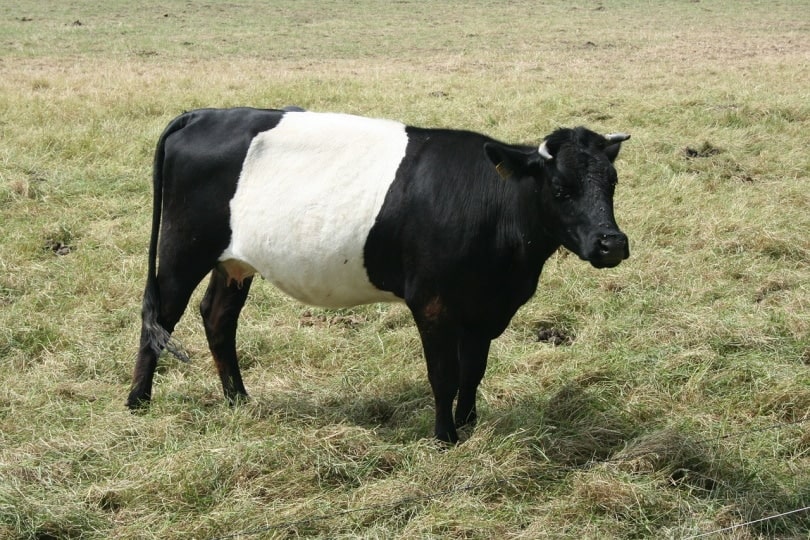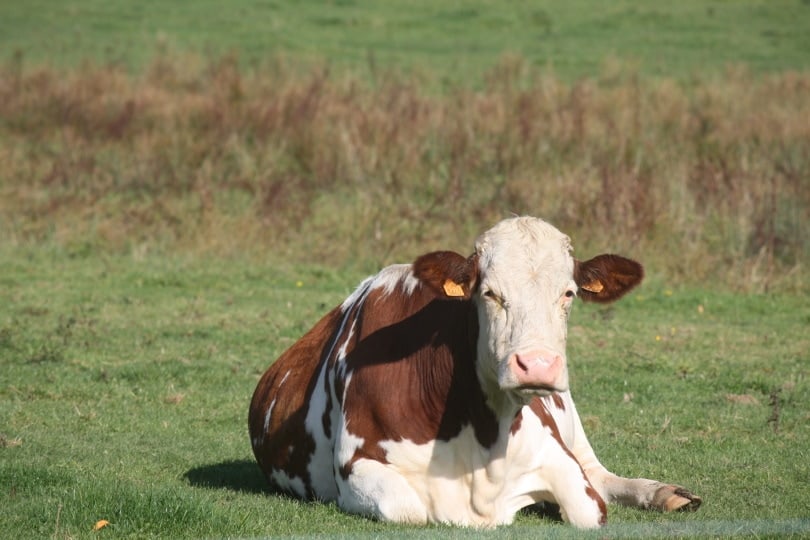Considering cows spend most of their days chewing cud, it makes sense that people have a misconception when it comes to their digestive system. In normal chit-chat, you are likely to hear people say a cow has four stomachs. This isn’t exactly true though. A cow’s stomach is different from that of a human, for sure, but they don’t actually have four. Cows only have one stomach, but that stomach has four compartments.
Let’s take a look at the stomachs of cows. You’ll get a better understanding of how they manage all that food they eat and the complex nature of these gentle giants.
 What Is a Ruminate?
What Is a Ruminate?
When discussing cows, the word ruminate must come into play. Ruminates are mammals that have evolved and can survive off hard-to-digest plants like grass. As you know, grass is a cow’s main source of food. It’s not exactly easy to break down, however. That’s where being a ruminate comes into play. These animals eat, regurgitate, then re-chew their foods to break them down properly and extract the needed nutrients their bodies absorb.

The 4 Different Compartments of a Cow’s Stomach:
The process of digesting food is more complex for cows. Unlike a human who only has a stomach with one compartment, everything a cow eats must pass through all four parts of its stomach. This is why so much of their time is spent eating. This longer process is needed, not to mention their size demands quite a bit of nourishment. Let’s take a closer look at the process and each of the stomach’s parts.
1. The Rumen
As we mentioned, cows eat a lot of grass and other plant matter. They don’t chew this food completely, however. In fact, they chew just enough to get the plants wet, then swallow. This food first passes into the rumen. There aren’t any stomach acids in the rumen but there are bacteria. Those bacteria are used to break down the plant matter a cow eats. This is where the food stays until the rumen is filled.
2. The Reticulum
Next up is the reticulum. This part of the stomach is home to bacteria like rumen. By the time food reaches this part, however, it has been broken down a bit. Once in the reticulum, the food mixes with the cow’s saliva. This mixture is called cud. After it’s made, a cow will regurgitate and rechew the cud to fully break down the food. Keep in mind, cows spend up to 8 hours a day eating. They also spend another 6 to 8 hours chewing their cud. That’s a lot of chewing in a day.
3. The Omasum
The omasum is where the cud goes after it has been rechewed. In this compartment, the food will collect water and a few of the nutrients that have been broken down already. While this may seem like a quick stop on the journey through a cow’s stomach it is very important. Most of a cow’s hydration comes from the omasum considering they rely heavily on water from their food.

4. The Abomasum
Many call this a cow’s true stomach. The abomasum is where digestion truly takes place. Here, there is stomach acid and bile to fully break down the food the cow has passed through its compartments. Once finished in this compartment, any leftover food will then pass into the intestines and the journey finishes.

Happy Healthy Cows
To keep cows happy and healthy, farmers must ensure they are chewing their cud. Normally, a cow will lie down during this process. This helps them form more saliva to control the bacteria inside their stomach. A proper diet for a cow must include the right mix to keep things working well inside their complex tummies. Cows need the right level of acidity in their food along with carbs, low moisture, and the proper amount of fiber. When they aren’t receiving what they need for proper gut health, lactic acids can build which lowers a cow’s immune system and can cause unwanted illnesses.
 Conclusion
Conclusion
As you can see, a cow’s stomach is quite complex. Sure, it makes sense to say they have four stomachs since each part handles a specific part of digestion, but the reality is, there’s only one stomach. The next time you see a cow that looks to be chewing gum, you’ll know it’s working hard to chew its cud and digest its food properly. You’ll also know this process is important for these beauties’ health.
Featured Image Credit: christels, Pixabay
